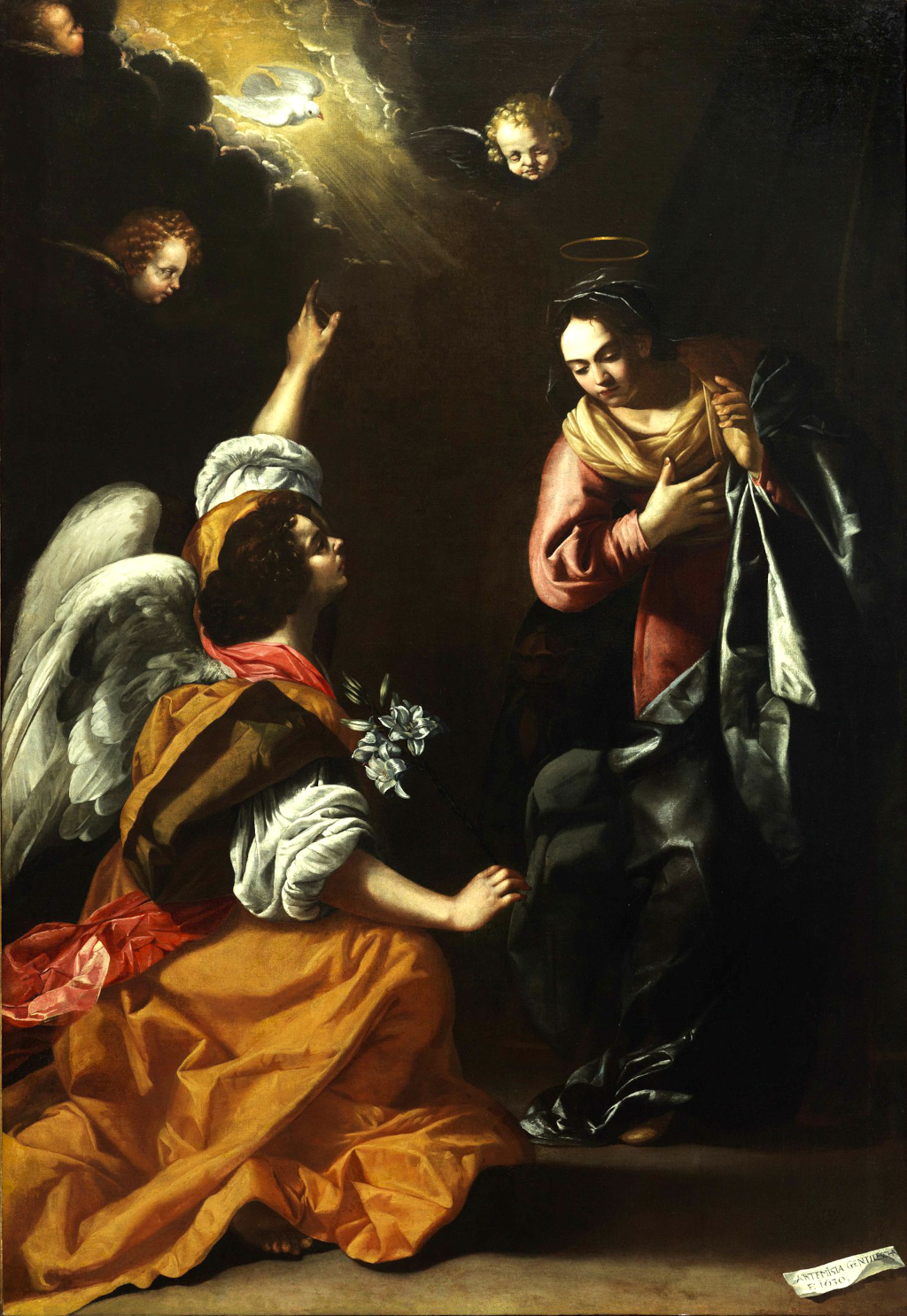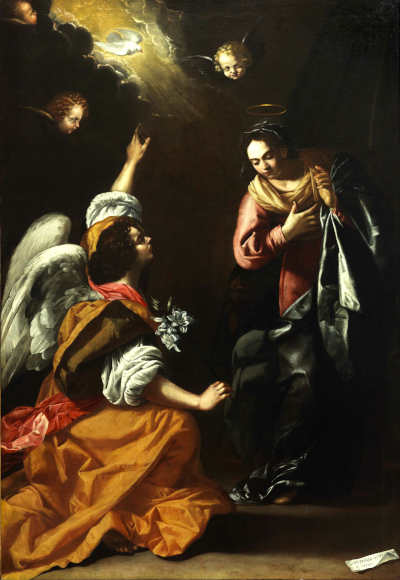Annunciation, from circa 1630, is one of Artemisia Gentileschi's largest religious paintings. Its provenance is relatively deep, as compared to many other artworks attributed to this important female painter.
The moment of the Annunciation describes the moment at which angel Gabriel informs Mary that she is to be the mother of God. Artemisia chooses to portray her in a humble manner, as she bends over whilst being given this news. The scene itself has been covered in every different manner possible by a plethora of religious artists leading up to this period, and for many years afterwards.
The artwork itself is amongst the largest completed by this female painter and much of this would have been due to its intended hanging position, within a large church wall. Her private donors would normally have requested smaller pieces to match their own requirements. The enlarged format of Annuncation allows Artemisia to add great detail to the clothing of both Mary and also the angel.
The Annunciation itself was a theme with a long history within Italian art, dating back well before even the early Renaissance. Caravaggio's version from 1608 may well have come to the attention of Artemisia, who was a great admirer of his, with her own artistic style bearing some clear resemblances. She was promoted during her own lifetime as a painter of female portraits, both with religious themes and also self portraits. In reality, she was a much more varied artist than this, and in recent years we have started to understand more about other sections of her oeuvre.
Description
Angel Gabriel kneels in front of Mary, and is situated in the lower left hand side of the composition. His wings appear strong, and prominent, though the artist is known to have re-done this part of the work several times. The angel's clothing is formed from complex layers of material, combining a number of different colours in a warm and attractive style.
The two main figures are separated into two equally sized portions of the work, taking up the two opposing sides of the piece. On the right hand side we find Mary, who also sports multi-layers of clothing. Gentileschi was a master of drapery and would take every opportunity to show off these skills. Above the two figures we find the heavens opening, with a number of small figures appearing just beneath.
Size and Medium
Gentileschi worked exclusively in oils for his paintings, and Annunciation used that same approach. She did also sketch as part of her working process, but very few drawings from her career exist today. This painting measures 257cm in height, by 179cm in width.
Location
Artemisia Gentileschi's Annunciation can be found today at the Museo di Capodimonte, Naples. She spent much of her life in this city, though also worked elsewhere such as in Venice, Rome and Florence. This painting was originally intended to be hung in a church, hence its size, but would eventually make its way into the collection of Cavaliere Francesco Saverio di Rovette in the 18th century.
Large Image
See below for a larger picture of the original work. Over time it is believed that some of the gradations of colour have been lost, and this has led to the tones becoming more contrasting and perhaps losing some of the subtle work added by Artemisia back in the 17th century. This is common within artworks of this period, and regular restoration is needed for most paintings from the Baroque movement.
 Annunciation
Annunciation




